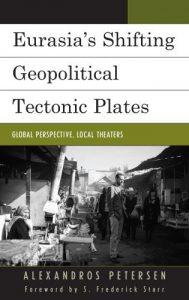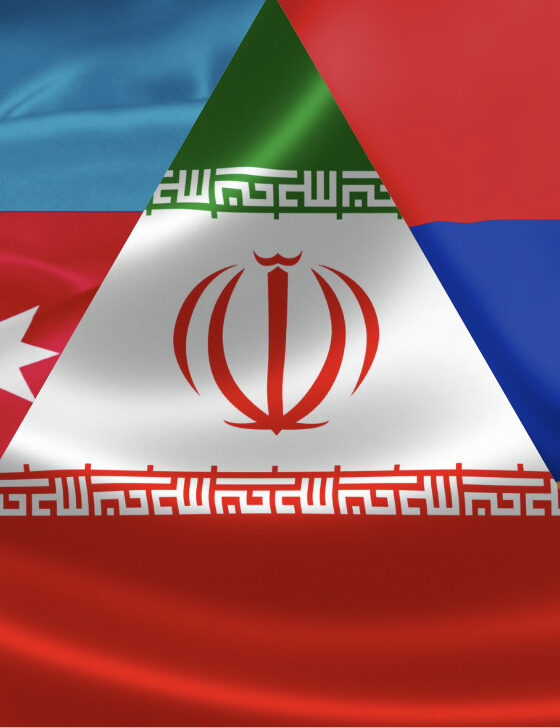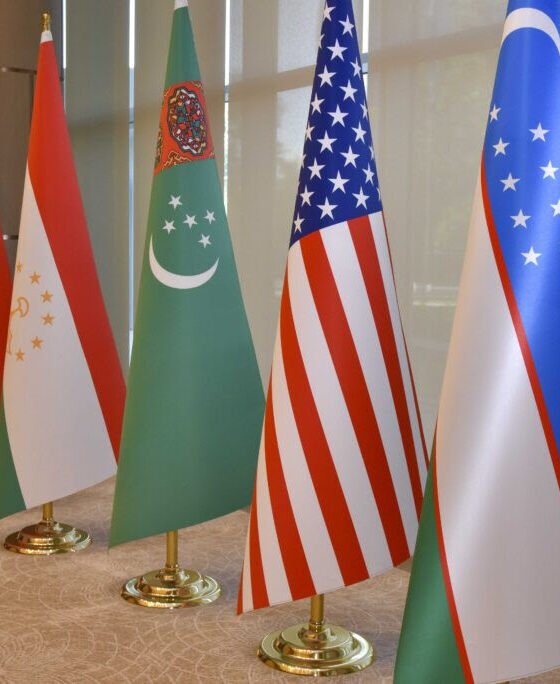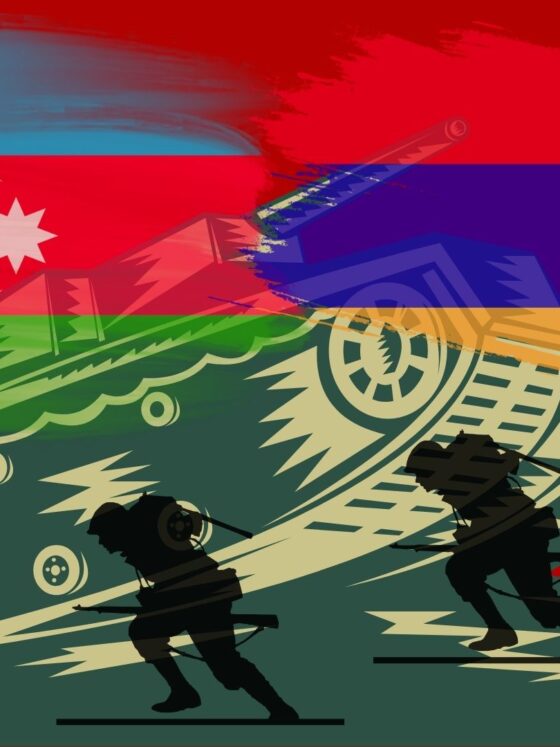By Rafael Sattarov
On June 18, 2017
Ivan Zuenko is a researcher at the Central Asian-Pacific Studies of the Far East department of the Russian Academy of Sciences. He is an expert in the Russian Council for International Affairs and the Carnegie Moscow Center, and regularly writes for publications such as “Kommersant” and “Lenta.ru”. Between 2006 and 2016, he taught at the Far Eastern Federal University, where he lectured on the history of China and the Asia-Pacific Region and the organization of authority and government in modern China. His scientific interests include: modern China, the political process in the PRC, China in post-Soviet space, and transboundary processes.
What has changed in the Far East of Russia to have caused Russia’s “gaze” to the East?
Well, first of all, there are many talks about the Far East and at a very high level. There is now a line ministry, a corporation on the development of the region; some form of expert discussion on the development of the Far East has been set up. If one considers the APEC Summit as part of this “gaze to the East,” there a single point in the region (the city of Vladivostok) was flooded with budget money, with which the city developed its infrastructure. Other aspects of the city remained largely underdeveloped. These are all concrete changes. Another thing is that the outflow of population continues. For now there are no bright cases of foreign investment. But it would be difficult to expect quick results, given the initial level of development of the region.
Prior to this, the last time the government seriously concerned itself with the regions was during the Soviet times. But this was development, aimed at developing defense infrastructure. This was not about opening up to the world or foreign economic relations. Over the following couple of decades, the Soviet legacy has slowly disintegrated while relations with foreign neighbors developed spontaneously and self-sufficiently. For example, in Vladivostok, an excellent infrastructure was introduced for the import and maintenance of used Japanese cars. The same relates to trade relations of small businesses with China and Korea. All of this really worked, and given the conditions of the government “giving up” on the development of the region, it made the life of the local population at least a little more comfortable. But it is clear that this is not the scale at which the state sees its policy.
I might perhaps say an unexpected thing, but strategically, what is now being done by the government in terms of development of the region has a positive character. It is another matter that everything turns out to be overwhelmingly centralized and bureaucratized, and for this reason very inefficient. But this is a problem of the whole country and not only “the gaze to the East” and the Far East.
The dean of the Faculty of International Relations of the Higher School of Economics HSE, Sergey Karaganov, noted that for a long time, it was difficult for Russia to turn its gaze to the East, as the expert community was dominated by Eurocentrists. How are things today among the expert community? Were they one of the obstacles in the turn of Russia to the East? Has the share of the Asia-centric experts in Russia increased?
It’s difficult to say that it’s a real obstacle. In general, I think the influence of the expert community on the decision-making process should not be exaggerated. More important are the kind of attitudes held by the political elite. So it is clear that there were relevant people who knew the West and had extensive experience of interaction with the West. It is also clear that in the end this experience strongly disappointed them. And it was a very subjective, very emotional disappointment. This is why “Asia-centrism” here is so compulsory.
In the expert community, it is also very noticeable how the reorientation of views takes place. A keyword and surname Google search offers amusing results. To be more precise: many of those who previously held the liberal and pro-Western views more typical of the intelligentsia now fully express “anti-Western” views. Does this mean that they became “Asia-centrists?” Unlikely. They still draw all their information from English-language literature and media. They continue to think in Western categories. It is only now that they speak in this way. Once the political wind changes, so will their statements.
If “Asia-centrism” is understood as the belief that China is our everything, and the future of the Russian economy lies in orienting itself toward the markets of the Asia-Pacific Region (APR), then this is just as pernicious an extreme as “Eurocentrism.” This is because at least our experts knew Europe more or less – they may only have partially understood it, but they could communicate with in in one language (English). Competencies on Asia, on the other hand, are still at a monstrously low level. And to make important, strategic decisions while relying on these competencies is a very arrogant move.
In fact, nothing extraordinary has yet been done in this direction. So far, we have just begun to say that Asia is very promising and have lost some illusions that it is possible to build some form of “equal relations” with the great Western powers. True, we suddenly somehow decided that this would work with great Asian powers (I am now talking about China). But there are fewer ideological or, I would even say, “emotional” obstacles to “Russia’s gaze to the East”.
How do you relate to the assumption that the Chinese project – “One Belt One Road” – is rather an attempt by China to export its “infrastructure bubble” to other countries, with a known, disappointing result?
Of course, the “One Belt One Road” is not just an attempt to sow reasonable, eternal good all over the world. It is based on the expansion of Chinese capital and the desire to use its own excess production capacity and working resources. China is interested in supporting its economic growth by building a lot, not only on its own territory but also abroad. It must be understood that, to a great degree, such large-scale infrastructural projects (for example high-speed railways, enormous traffic junctions, and airports) are extremely unprofitable in China itself. On the other hand, where and how to spend their money is a problem for the Chinese. They build an expensive object, but offer employment and thus redistribute material resources within the country. At the same time, they solve important issues related to ensuring population mobility, national unity, etc. I do not know to what extent one can call this a “bubble”. This is effective in China itself, albeit at the cost of an increase in domestic debt.
The problem is that China will not offer free services to its neighbors. And why should they? So for now, options for loans and concessions are being discussed. Neither is profitable for us. And solving China’s economic problems by pounding ourselves into the debt-hole is somewhat strange. For example, I understand why for so many years they have been unable to answer the question of creating a transit railway from China to Uzbekistan through Kyrgyzstan. Given the mountainous terrain, building it is expensive and will require a huge loan (from China itself, of course). Kyrgyzstan itself does not really need it. The examples of Sri Lanka and Kenya, who climbed into Chinese debt, are before our eyes. These are not revelations; many understand this.
This is why I consider that the “Silk Road” is an effective mechanism for redistributing resources within China, but it will not change the world, and it is unlikely that it will even seriously change the economy of its neighbors. At the same time, I would not like to unequivocally cross out all future projects involving Chinese capital. Some projects, including infrastructure, may be adequate. It is necessary to look at the conditions, analyze and not fall into the thought that, “the main thing is to run something to report, and then come what may.”
In your article “The Window to China: Why Kazakhstan managed, and Russia did not”, you noted that, despite many years of effort, Russia and China have not managed to create even border areas of free trade. Kazakhstan was unexpectedly the frontrunner, and Moscow has much to learn from the experience of its neighbors. You note several important points on the development of cross-border trade between Russia and the PRC. Nevertheless, many suggest that among the impediments to cross-border trade is an excessive emphasis on security issues rather than trade, as well as factors such as ignorance of the Chinese language by Russian customs officers, suspicion toward the Chinese, etc. To what extent does this reflect reality?
Yes, that is so. In the dilemma between risks and opportunities, our country would prefer to avoid risks and forego opportunities than the other way around. Thus has it been historically. Additionally, it seems to me that this fully corresponds to the attitudes of the majority of the population. So here the government’s actions fully correspond to what would be considered democratic. In addition, the economy of our country and its individual regions has traditionally not been so strongly tied to foreign economic activity. If we talk about peripheries, such as the Far East, then people are used to the subsidized development model.
Basically, that is how it happens. If we look at the borderlands, we will see that the biggest legal earnings are for state employees and employees of state companies: relatively speaking, the military and the staff of RR (Russian Railways). And large earnings outside this category have a shadowy character. These are the smugglers, and those who are hired to transport commercial goods across the border in the guise of a commodity for their own consumption. It turns out that, for some, the development of foreign economic relations does not solve much, and for others it serves to preserve the unclear uncivilized nature of cross-border links. This to some extent explains the failure of many border projects.
Kazakhstan has succeeded, and for us it is a great benefit that in a concrete example of KKhorgos we can see how critical are the risks that arise when implementing such projects. Having studied the resources, I came to the conclusion that maybe Khorgos does not bring any super-benefits, but even the risks are minimal. This zone does not influence illegal migration. Contraband existed even prior to Khorgos. And shuttles do not hurt the national budget very much. Moreover, this is also a micro-economy: some people earn, others receive access to cheaper goods. What is so fundamentally bad for the state here?
All this is true, but at the same time I do not see any prospect that such a zone would open on the border of Russia and China in the coming years. It is just not necessary to anyone. The officials will continue to follow the principle of “better to expect the worst” – which is understandable from the standpoint of bureaucratic logic.
Experts at different levels often argue that in Chinese projects in Eurasia, Kazakhstan plays an important role. Others indicate that we should not overestimate the role of Kazakhstan in such projects, as all the main routes pass through Russia, and if Kazakhstan does play a role, then it is very modest. Which of these contentions is more realistic at the moment?
I rather support the first point of view. Yes, one way or another, all realistic routes are tied to Russia. Or rather, the European part of Russia. I say “realistic” because I do not believe in transcontinental routes to the south of the Caspian Sea, especially through the Caspian Sea, and then the South Caucasus. These are all attempts at wishful thinking, which are desperately stalled in real life. I wrote about this in the article, “How the Chinese Silk Road will pass and who will earn from it”.
So the more convenient route for Chinese shippers is through the territory of Kazakhstan. And the creation of the Eurasian Economic Union (EEU), with the participation of Kazakhstan, of course, seriously raised the attractiveness of this country for the overland transit of goods from APR to Europe. Kazakhstanis are also good people – all these years, they have been seriously engaged in the development of transport infrastructure, and their program “Nurly Zhol” is perhaps the most sane of all those that are being implemented under the Chinese initiative “One Belt, One Road.” But I would like to draw your attention to another aspect. Russia should learn from Kazakhstan in terms of development of human resources. From the outside, Kazakhstan’s efforts in this direction are very noticeable.
What is the joining of the EEU and the Silk Road Economic Belt (SREB)? Can two models of cooperation be joined without an FTZ (free trade zone)? After all, in the case of an FTZ with China, it is primarily Russia that is not interested.
Of the three terms, (EEU, SREB and ‘joining’), the one that is more or less understandable is EEU. It can be treated differently, but objectively – it’s a working organization with clear rules of the game and an institutional framework.
The Chinese Initiative “One Belt One Road” (of which the Silk Road Economic Belt is a part) – is a very abstract, philosophical conception of co-development. “For all good against all bad.” Adequate Chinese investments will arrive in the region – good. But they have been arriving prior to this formulation. And they will continue to arrive, even if the Chinese suddenly stop talking about “One Belt One Road” and start talking about, for example, “Earth and Water.”
“Joining,” in turn, is a form of declaration that the EEU, and above all Russia, is not against “One Belt One Road”. The problem is that it is very difficult to go against philosophical conceptions “for all good things”. Indeed, we are in favor of cooperation, and in favor of investments. But if we talk about each separate cooperation project, then a number of questions arise. For the most part, we are yet unable to resolve them with our Chinese friends. Understandably, the model of tied credits for the creation of unprofitable infrastructure project is not an appealing option. Likewise investments in the commodity sector when all the technology, equipment and surplus value will be from the Chinese.
Regarding the free trade zone with the area of the EEU, the Chinese, it seems to me, had better forget it. It cannot be, because it cannot be. Particularly when we take into account the powerful push for protectionism in the post-Soviet countries, a topic on which the elite and the people are generally unanimous. So if the Chinese push this theme during talks, it would only irritate everybody. Therefore, they will probably not do it. There was no mutuality regarding the FTZ. For China, the current situation is also beneficial in the sense that in Russia and the other countries of the EEU, China has a reliable rear – in a sense, like-minded people in the international arena. It is unlikely that it would want to risk them. And one can earn in other places. The post-Soviet market is not that important to China.
Many in Russia maintain that Russia’s current status in EEU does not correspond to Russia’s interests, since despite having the largest economy – in aggregate superior to all the economies of the members of the organization combined – Moscow has only one vote and equal status to that of Armenia. In the long term, such a consensus option does not mesh with Russia’s interests, and Russia will have to change its position within the organization. To what extent do such theses have legitimate grounding, and how do you think Moscow should change its status within the EEU?
I fear that Russia’s change of status within the organization is unrealistic. Those are the rules of the game which we agreed to play by, and no one will understand if we begin to change them now. Indeed, from the point of view of economic pragmatism, the conditions under which the EEU functions are not very profitable for Russia. Yet firstly, there are geopolitical, ideological and humanitarian benefits which are difficult to measure objectively. Secondly, the situation in the post-Soviet territory is such that without preferential terms for partners, Russia would hardly be able to create anything.
The relations between our countries still resemble a former metropolis and its colonies. On the one hand, Russia is unable to rid itself of the “Big Brother” complex, and I understand the extent to which this irritates our partners. On the other hand, former Soviet republics, in spite of the fact that Russia has made enormous investments and is willing to continue to offer financial support, still believe that Russia owes them something, and yet to maintain partnerships, one needs to pay extra when it is beneficial to both parties. And when Moscow suddenly starts to act pragmatically, it causes misunderstanding and insult.
In general, I believe that the conditions under which the EAEC was created were originally written for Ukraine, the country with which Russian enterprises (primarily defense companies) were connected by a large number of production chains. And indeed an agreement with Ukraine would only be possible on terms of equality. Unfortunately, it did not work out that way either. And then the organization continued to exist, obeying the inner logic of development. In it, officials work. They face challenges. They need concrete results. The entry of new members is the most concrete and clear result to all. It does not matter who these members are: Armenia, Moldova or Uzbekistan. Very few reflect on the consideration of economic expediency.
Regarding Kyrgyzstan’s membership in the EEU, you noted that Kyrgyzstan created a gap in the EEU when Chinese goods poured through the country at preferential customs conditions. In Kyrgyzstan itself, on the other hand, it is believed that after joining the EEU the country lost its competitive and profitable qualities; small and medium-sized entrepreneurs had previously large profits in the famous “Dordoi” market, supplying Chinese goods for neighbors at wholesale prices. What is the benefit to Russia of Kyrgyzstan’s membership of the EEU, and what is the advantage to Kyrgyzstan?
I will clarify a little. I came to the conclusion that transit shipments of Chinese consumer goods through Kyrgyzstan for the Russian market increased significantly. And the difference in the customs statistics of Kyrgyzstan and China shows that, to a large extent, these goods are smuggled. The reason why the transit went through Kyrgyzstan is very simple – it is easier to negotiate with customs officers there than in Kazakhstan or Russia.
As the anthropologist Janet Roitman writes, “even if the border zones are poor, one nonetheless makes big money there.” Large profits from shadow schemes settle in the pockets of a very limited number of people. And if the budget and, consequently, the general population, get anything, it is only from the “multiplier effect,” once these bribe-takers and logisticians spend money in Kyrgyzstan.
As for Dordoi, yes, Kyrgyzstan’s hopes have not been met. But the point here is not that it is the fault of the EEU, but that the purchasing power of Russia and Kazakhstan has declined because of the fall in national currencies. Chinese consumer goods are not so attractive to buyers as they were in the heyday of the Dordoi. Plus, a more promising competitor – KKhorgos – has appeared. It is much easier to implement shuttle trading schemes there. Plus, it has direct access to the railway. That is, a Dordoi-type site is an anachronism, which should not be relied on at all as part of the country’s development strategy.
The main advantage for Kyrgyzstan in joining the EEU, in my opinion, is the priority position that Kyrgyz workers received in the labor markets of Russia and Kazakhstan, ahead of workers from Uzbekistan and Tajikistan. The EEU received another status-based result, which allows for discussions about the progressive development of the organization. At the moment this is, perhaps, all. In general, Kyrgyzstan’s accession posed a number of problems for the EEU, including specific financial losses, which mainly fell on Russia’s shoulders. These losses came not just customs duties to the unified consolidated budget of the EEU (which, based on 2016 data, amount to at least $400 million) but also the funds that had to be allocated in order to tighten Kyrgyzstan up to the standards of the Union.
Often, when communicating with Russian experts and individual foreign policy officials, I have observed that they contend that the future is behind the project of cooperation of “Big Eurasia” and it is time to forget concepts such as post-Soviet space. How realistic is the “Big Eurasia” project – is there a future for it?
It is difficult to competently discourse on the theme of the “Big Eurasia”, but I will try to express my private opinion. It seems that this conception appeared as a response to the Chinese initiative “One Belt One Road”. And it was created in its image and likeness. It is the same abstract concept as “for all good and against all bad”. Exactly the same fuzzy framework – both in content and in geographic coverage. The name is just as beautiful and meaningless. I once shared these thoughts with one of my acquaintances (he is a Sinologist, lives in China and functions in a somewhat Chinese-way). Well, he was delighted. And he said that this is a brilliant move of Russian diplomacy. In effect, calls for integration are a win-win piece. To argue against them is impossible. Waiting for concrete results is difficult. And in general everything depends not only on you, but also the guy on whom you can always dump the failure of ideas.
The “Big Eurasia” is of course, a lot wider than “post-Soviet space”. It is the whole of Soviet Union, plus China, India, Pakistan, Southeast Asia plus Europe. It corresponds to the formula of “from Lisbon to Vladivostok, from Murmansk to Singapore”. This project is approximately as realistic as the Chinese initiative “One Belt One Road”. If we do not finally fall into the state of the “new Middle Ages”, when there will be a “war of all against all”, then some steps towards integration will no doubt take place. Certain agreements will be signed, forums carried out. These can then all be considered achievements of the “Big Eurasia” project.
As for the concept of “post-Soviet space” – it is liked for its concreteness. This is the territory of the former Soviet Union. Yet the term CIS is not completely correct. People who avoid saying “post-Soviet space” probably do not like the epithet “Soviet”. Well. From this you cannot escape. We are all from the Soviet Union, the language of interethnic communication is still Russian, we all live in the same houses of typical buildings and the mentality is still very similar. So I do not see any special alternatives to the term “post-Soviet space” at the moment. At the same time, I want to note that in my opinion, it has no political implications. It’s just a convenient term.
The late American strategist Zbigniew Brzezinski noted the inevitability of a Russian-Chinese confrontation in the long term, and as Russia’s relations with the West are restored, it will no longer need to develop the EEU. Is there really a time frame for Russian-Chinese cooperation on the EEU and SREB? To what extent Brzezinski right in his assessments and forecasts?
You know, although I can occasionally be rather skeptical in relation to China, I still believe in the future of Russian-Chinese relations. I have often repeated that the Chinese are not “good wizards in blue helicopters”. But one can deal with them. It is indeed important to take into consideration their specificities, but one can negotiate with them and for mutual benefit.
As for Brzezinski’s theory on the “inevitability of confrontation”, it is possible that he based it on the beliefs (widespread among our alarmists) that China’s progressive development will be eternal. Meanwhile, as far as I see the situation in China, the peak of its power in the current development cycle has already passed, or is being observed right now. China faces enormous systemic problems, which I cannot imagine how they will solve. And an analysis of the latest decisions of the Chinese parliament and the plenums of the ruling party shows that the Chinese also cannot imagine how.
In other words, I think that China will now spend its main efforts on solving internal problems. Therefore, the view that China will continue to grow at 10% of GDP per year and will inevitably shift to global military expansion seems to me a little outdated. I see potentially conflicting points of contact between Russian and Chinese interests: the problem of “lost territories” in the Far East, interests in Central Asia, and approaches to the Arctic. But I do not see here an element of the “inevitability” of deteriorating relations. A usual field of work for diplomats and politicians.
As for the development prospects of the EEU, I’m not at all sure that China is a significant factor. The EEU is trying to restore the economic ties disrupted by the collapse of the USSR, to use its strengths and reverse the negative effects of political disintegration. This is basic. It is possible to develop the links of this single organism with the powerful Chinese economy. It is also possible not to do it. Of course, membership in the EEU in some way probably predetermines the pro-Russian vector of politics. But only to a certain extent. Kazakhstan will not be called a pro-Russian satellite, although this is our closest and most promising ally, it seems to me. Well, no one prevents this ally from developing cooperation with China. The future of Russian-Chinese relations does not need to be idealized and does not need to be demonized, but it does exist. As we learn to interact with it (and this is a long and very expensive process), we will learn how to extract not only political but also economic benefits from it.













